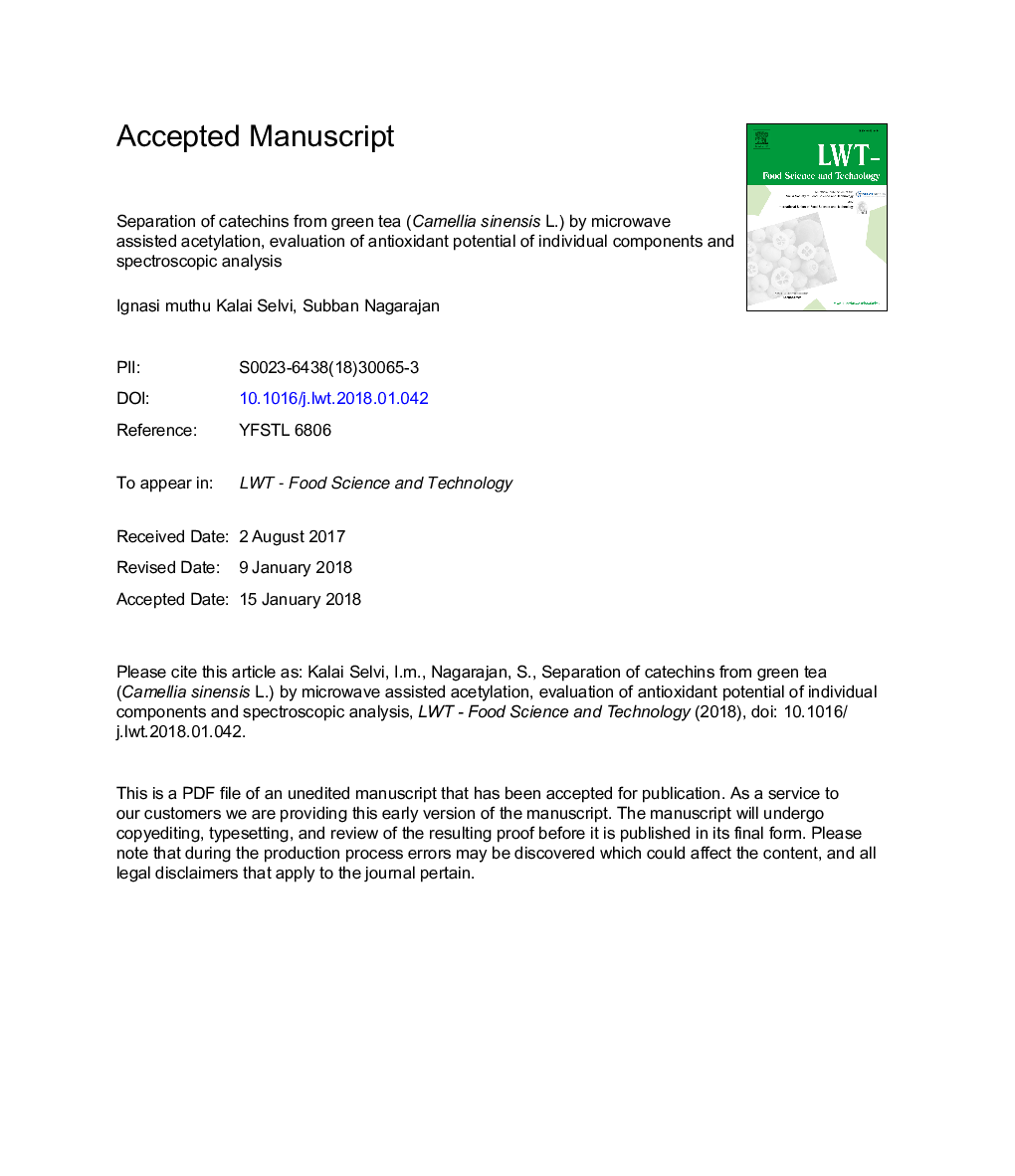| Article ID | Journal | Published Year | Pages | File Type |
|---|---|---|---|---|
| 8891810 | LWT - Food Science and Technology | 2018 | 28 Pages |
Abstract
Separation of individual green tea catechins has the limitation due to their structural resemblance and unequal distribution. Hence, the objective of this study was to develop separation methods based on 1.Preparative Thin Layer Chromatography (TLC) using oxalic acid impregnation and 2. Microwave (MW) mediated acetylation followed by classical silica gel column chromatography separation. The yield of total catechins by different extraction techniques was, conventional (7.3%), liquid-liquid (7.8%), Soxhlet (8.3%) and microwave (8.8%). Acetylation of total catechins under various MW conditions explored with acetic anhydride, triethylamine and standardized at 15â¯minâ¯at 1g scale and subjected to separation. Subsequently, the individual catechin acetates deacetylated under MW conditions and characterized by TLC, High-Resolution Mass Spectrometry (HRMS), Fourier Transform Infrared Spectroscopy (FT-IR), 1H and 13C Nuclear Magnetic Resonance (NMR) spectroscopic studies. The total polyphenol content of the extract was 931.17â¯Â±â¯0.67â¯g GAE kgâ1. The antioxidant activity of deacetylated catechins was evaluated by Ferric-Reducing Antioxidant Potential (FRAP) in terms of Trolox equivalence (TE) and % inhibition of 1, 1-diphenyl-2-picryl-hydrazyl (DPPH). Accordingly, the TE and DPPH % inhibition was epigallocatechingallate (12.3 and 71.9%), epicatechingallate (11.5 and 55.5%), epigallocatechin (9.10 and 46.0%), epicatechin (7.40 and 35.1%) respectively.
Related Topics
Life Sciences
Agricultural and Biological Sciences
Food Science
Authors
Ignasimuthu Kalai Selvi, Subban Nagarajan,
